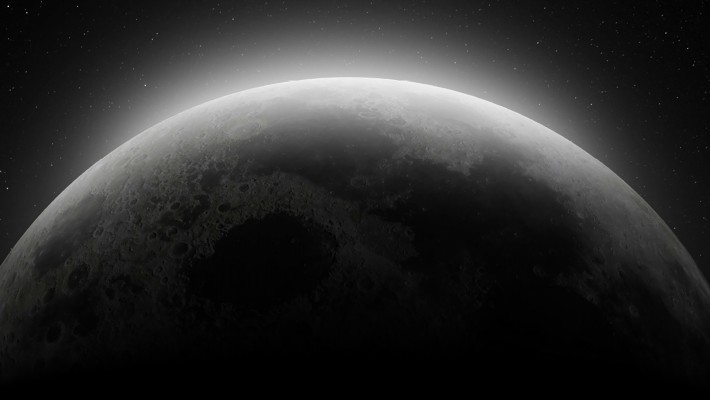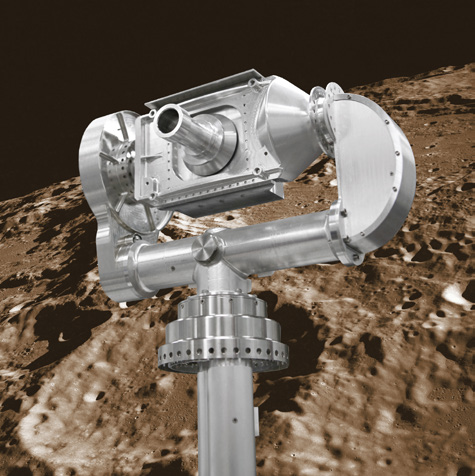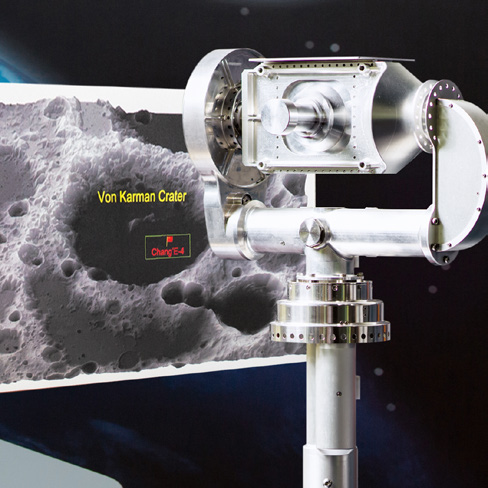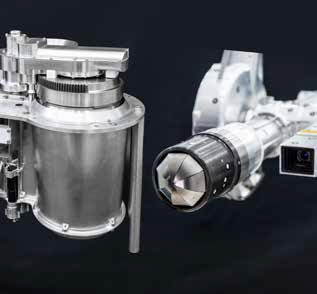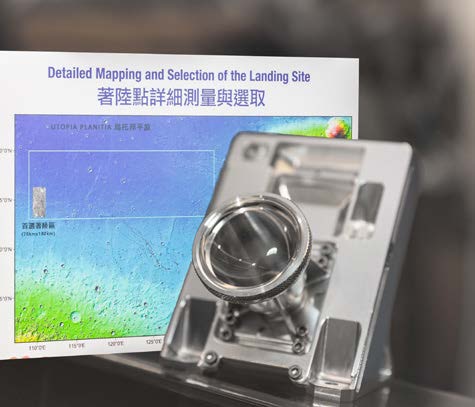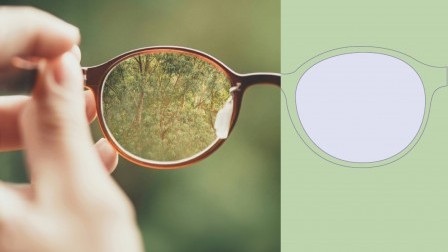Uncovering Mysteries of the Moon
PolyU’s pivotal support for the Nation’s historic Chang’e-5 and Chang’e-6 missions.
The Moon’s far side is quite unlike the side facing Earth, and man is just beginning to unlock its mysteries. Recently, China made history by becoming the first country to collect soil samples from there and return them to Earth. This landmark achievement unveils secrets of the hidden hemisphere, offering valuable insights into lunar geological and thermal history. The nearly two-month-long Chang’e-6 mission, despite uncertainties and risks, accomplished this unprecedented task of automated regolith sample collection by using the PolyU-developed Surface Sampling and Packing System.
The Surface Sampling and Packing System was developed in collaboration with the China Academy of Space Technology (CAST). Unlike previous methods adopted by other countries involving drilling or manual excavation, the groundbreaking system is designed for fully automated multipoint lunar surface sampling and has a packaging mechanism.
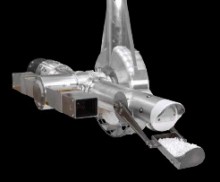 | 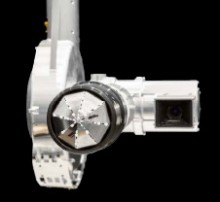 | |
| Sampler A | Sampler B | |
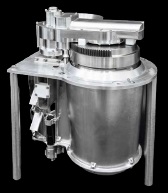 | 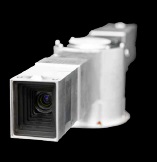 | |
| Sampling and packaging system | Near-field camera |
The PolyU-designed system for the Chang'e-6 mission
The mastermind behind the system is Professor Yung Kai-leung, Director of the PolyU Research Centre for Deep Space Explorations (RCDSE). He and his research team have spent days and nights tackling all the challenges and difficulties arising from the daunting mission.
Unprecedented challenges
Sampling on the lunar far side presents unique difficulties. “The rugged terrain, dominated by giant craters and scarce flat surfaces, poses special challenges to the sampling task. Additionally, direct communication with Earth is impossible; the probe has to rely on the relay satellite Queqiao-2 for communication,” Professor Yung explains.
“Drawing on our experience from previous projects, we successfully integrated numerous enhancements into the system, enabling timely sampling within a more restricted timeframe,” Professor Yung adds.
It was not the first time the PolyU system has been pivotal in lunar missions. In 2020, an earlier version of the system played a key role in the Chang’e-5 mission, collecting and returning the Nation’s first lunar soil sample from the near side. The enhancements for the Chang’e-6 mission in 2024 have improved its capabilities, enabling more efficient and reliable sample collection.
The PolyU-designed system features two samplers for collecting both loose and sticky lunar soil, with two high-temperature near-field cameras capturing sample images from multiple points on the lunar surface. The automatic vision guidance ensures accurate sampling, deposition, and placement into the ascender. A specialised container operates with a sealing mechanism to secure and package the samples.
PolyU’s pioneering Industrial Centre was integral to the manufacturing and quality control of these complex instruments. “The manufacturing of the system parts requires a very high level of precision, accuracy and reliability,” Dr Robert Tam, former Associate Director of PolyU’s Industrial Centre, says.
The sampling process begins with the near-field cameras guiding the collection and deposition of lunar soil samples into the container. Once the sampling is complete, the sealing and packaging device securely seals the container. Guided by the near-field cameras, the sampler then inserts the sealed container into the ascender for its return journey to Earth.
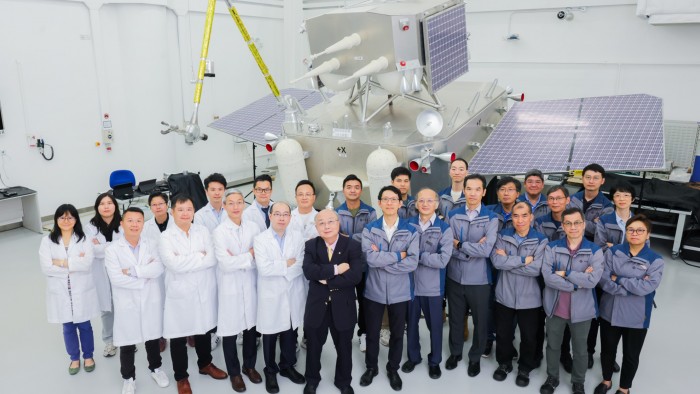
PolyU has participated in a number of national space mission projects, and all space instruments are manufactured at PolyU’s Industrial Centre.
Analysing soil samples with state-of-the-art technology
In a remarkable nod to its deep space research prowess, PolyU has obtained lunar soil samples collected by the Chang’e-5 mission, approved by the China National Space Administration’s Lunar Sample Management Office.
The PolyU research team has received two distinct lunar soil samples: a surface soil sample weighing 400mg, collected by the Surface Sampling and Packing System the team designed, and a subsurface soil sample totalling 42.6mg.
These precious samples are currently stored in the lunar regolith storage and analysis system at PolyU’s RCDSE, under stringent conditions of 99.999% high-purity nitrogen to prevent contamination or oxidation.
This unique, state-of-the-art facility boasts an integrated multifunctional system equipped with nine advanced instruments. It allows researchers to conduct comprehensive in-situ analyses of the lunar regolith in 12 different ways without exposure to uncontrolled environment during transfer.
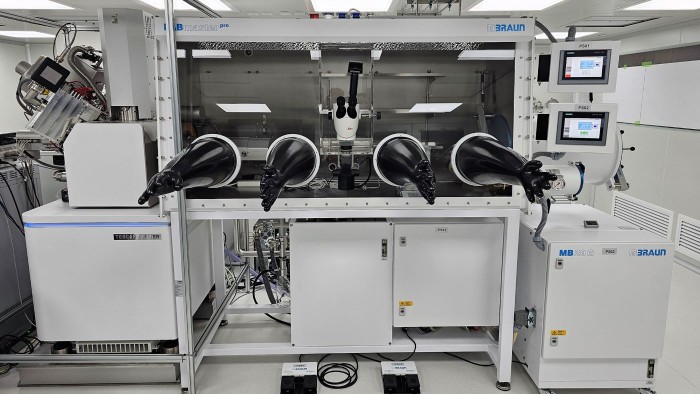
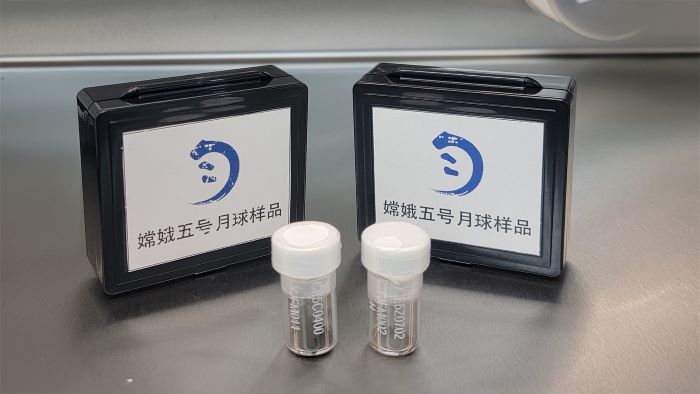
Two sets of the lunar soil samples collected by China’s Chang’e-5 mission are stored in the Space Resources Laboratory of the RCDSE. The laboratory has set up a lunar regolith storage and analysis system to properly store and analyse the lunar soil in depth.
Finding water in lunar soil
Leading this groundbreaking research is a team of seasoned PolyU experts, spearheaded by Professor Yung and Professor Wu Bo, Associate Head of the Department of Land Surveying and Geo-Informatics (LSGI) and Associate Director of RCDSE. They are joined by Dr Wang Xing, Postdoctoral Fellow, and Dr Sergey Krasilnikov, Research Assistant Professor, both from LSGI. Their research focuses on analysing the micromorphology of agglutinate fragments in the lunar soil samples and investigating the sources of its water content.
Professor Wu highlights the importance of these findings for the sustainability of future human activities on the Moon. For instance, part of the upcoming Chang’e-7 and Chang’e-8 missions will be to form the basis for an international research station on the Moon. Water resources will be important for the sustainability of such a research station.
Professor Wu elaborates, “The lunar water can originate from several sources such as solar wind implantation, comet or meteorite impacts, or volcanic activity on the Moon.” He believes that “a single grain of lunar soil” may hold the key to unlocking the mysteries of the Moon’s formation, evolution, and dynamic environment.
Laying the groundwork
As space exploration evolves and space resource utilisation becomes a priority, the Space Resources Laboratory at RCDSE leads the way. Equipped with advanced capabilities such as high-purity nitrogen protection devices, the Laboratory excels in preserving and studying these invaluable extraterrestrial materials for long-term interdisciplinary research. With a vision for the future, the Laboratory is not just prepared, but well poised to handle samples from Mars and asteroids, laying the groundwork for the Nation’s further aerospace development.
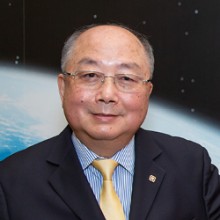
Professor Yung Kai-leung
• Director of the Research Centre for Deep Space Explorations
• Sir Sze-yuen Chung Professor in Precision Engineering
• Chair Professor of Precision Engineering and Associate Head, Department of Industrial and Systems Engineering
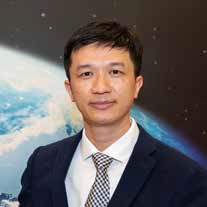
Professor Wu Bo
• Associate Director of the Research Centre for Deep Space Explorations
• Fiona Cheung Professor in Spatial Science
• Associate Head (Research) and Professor, Department of Land Surveying and Geo-Informatics
Profound experience in deep space research
As the only tertiary institution in Hong Kong to participate in various space missions, PolyU's involvement in the Nation's space exploration dates back to the 2010s, with active particiaption in landmark projects.
Chang’e-3 mission (2013)
| Professor Yung’s team developed the Camera Pointing System with CAST, while Professor Wu’s team worked on the 3D mapping model and landing site analysis. |
Long March-6’s “20 satellites in one rocket” mission (2015) | PolyU developed the microsatellite platform and deployment system with Aerospace Dongfanghong Development Ltd, Shenzhen. The instrument is installed in the Kaituo-1B microsatellite. |
Chang’e-4 mission (2019)
| The Nation made history with the first soft landing on the far side of the Moon. PolyU helped select the landing site through topographic and geomorphological characterisation and analysis; and captured and monitored the operation of the lunar rover Yutu-2 and took images of the Moon using the Camera Pointing System. |
Chang’e-5 mission (2020)
| In collaboration with CAST, PolyU developed and manufactured the Surface Sampling and Packing System for the mission, the world’s first fully automated multi-point lunar surface sampling and packaging system. The system automatically collected and packed approximately 1.5kg of surface lunar soil samples and returned to Earth. |
Tianwen-1 mission (2021)
| PolyU developed the Mars Landing Surveillance Camera for monitoring the deployment of the Mars rover Zhurong and identified possible landing sites using advanced topographic mapping and geomorphological analysis technologies. |



